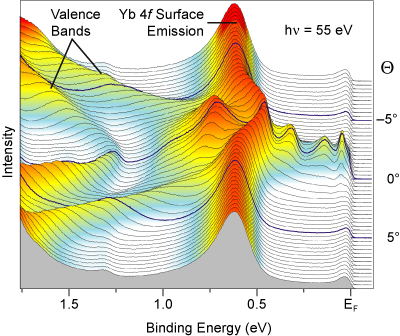Heavy fermions

Heavy Fermion compounds are a special type of intermetallic compounds, which contain partially filled 4f or 5f orbitals. Because the f-orbitals are only partially filled and the f-orbitals are spatially strongly confined, which is equivalent to having localized magnetic moments in a metal. Typical heavy fermion systems are: CeCu6, CeAl3 CeCu2Si2,YbAl3,UBe13 and UPt3.
It is the spin-exchange between the localized magnetic moment (in the f-shell) and the conduction electrons which lead to a hybridization gap in the vicinity of the Fermi surface, leading to a hugely increased effective mass for these electrons, which can be several hundred times larger than the bare electron mass.
The effect of the heavy fermions is typically measured with quantities which are proportional to the density of states at the Fermi surface, such as resistivity or magnetic susceptibility.
In our group we developed an optical method for investigating the dynamics of these strongly correlated ground states. It turns out, that their ground state shows amazing memory capabilities.
References:
Books:
Hewson, A.C. (1993), The Kondo Problem to Heavy Fermions, Cambridge University Press.
P. Coleman (2007). "Heavy Fermions: Electrons at the Edge of Magnetism. Handbook of Magnetism and Advanced Magnetic Materials.". arXiv:cond-mat/0612006v3
Reviews and Letters:
K. Andres, J.E. Graebner, H.R. Ott, Phys. Rev. Lett. 35, 1779 (1975)
H. v. Löhneysen, A. Rosch, M. Vojta, P. Wölfle, Rev. Mod. Phys. 79, 1015 (2007)